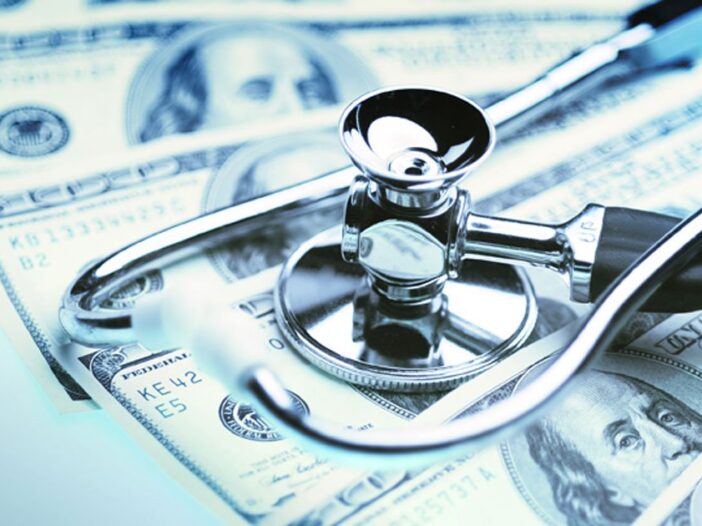
After the third quarter earnings announcement, America’s largest health insurer, UnitedHealth Group Inc sent out a message of steady revival and promising growth outlook. The pandemic may not be over but the COVID-19 hospitalizations are surely on the wane. Commercially speaking, more promising elective procedures are now getting back to normal as the “unnatural suppression” due to COVID fears doesn’t seem to be the case anymore. This, coupled with a robust outlook for Medicare Advantage and Medicaid membership numbers, and a digital transformation through virtual care for patients emerge as factors fueling stakeholders’ sentiment.
Dirk McMahon, President & Chief Operating Officer shares an important update on the $ 8-billion acquisition of Change Healthcare – announced in March. The deal is set to close in early 2022. Having Change onboard through subsidiary Optum, UnitedHealth looks to catalyze transformation in the healthcare delivery with reduced administrative wastages and swifter payments.
FAST FIVE Takeaways:
1. A quick eye on Q3 numbers:
Company’s third quarter and year-to-date revenues grew by a robust 11 and 12% (YoY) to $72 billion and $214 billion respectively. Earnings from operations stood at $5.7 billion, which was $4.7 billion a year ago. Quarterly earnings stood at $4.52 per share, versus $3.51 per share a year ago. Company’s arm, OptumHealth led this growth with 54% contribution to enterprise operating earnings on strong 30% YoY growth reported in revenues per consumer. Overall net margins improved to 5.6% versus 4.9% last year, indicating a steady revival. But a surge in COVID hospitalizations during the third quarter squeezed margins from 6% in the second quarter. COVID hospitalizations were at 60,000 – above the second quarter and peaked to nearly 30,000 in August before starting to decline in September.
2. Growth triggers and caution:
UnitedHealthcare, while looking to expand its membership base with geographical expanse, is also sitting on the cusp of transforming healthcare delivery with focus on virtual care. It is using Optum’s distinct virtual capabilities to introduce a new suite of digital-first products, offering a near seamless experience between virtual and traditional primary, specialty and urgent care. UnitedHealth COO Dirk McMahon expects to further build on these opportunities during 2022 and beyond “to connect and integrate multiple channels of care, simplify the experience for patients and providers and deliver quality care that is affordable and in the optimal setting.” The caution, however, comes from the immediate uncertainties and risks linked with resurgence of COVID-19 cases. Evidently, during the third quarter, direct COVID care and testing costs ran above the expectations. This poses a concern for sustained growth.
3. Health of the investors’ wealth:
UnitedHealth shares have gained over 21% year-to-date, nearly matching S&P 500’s gains. Also, since the announcement of the third-quarter earnings last week, the company’s shares have added another 5 per cent to end Monday at $425.62. Company’s strong return on equity of 23.5% makes for a solid foundation on overall operating performance and efficient capital structure. The cash flows, as explained by Chief Financial Officer, John Rex, from operations in the third quarter were $7.6 billion or 1.8 times the net income and $19.1 billion year-to-date or 1.4 times gives a comfort to the management in the pandemic-stricken uncertain times.
4. What’s next ?
Riding high on combined engines of Optum and UnitedHealthcare, 2021 adjusted earnings outlook is in the range of $18.65 to $18.90 per share, after factoring in the unfavorable COVID impacts, on par with company expectations. Going forward, 95% of UnitedHealthcare members would be in four-star rated or better plans for 2023, this makes a new high for the company, which had this share at 78% for 2022. Company’s Medicare advantage membership grew to 745,000 this year inclusive of plans which serve dual special needs numbers. It plans to add over 900,000 Medicare advantage members. On Medicaid, the number of people served grew by more than 1 million members over last year. UnitedHealth continues to pursue product innovations such as All Savers level-funded offerings and looks to improve its competitiveness in the market and intensify the momentum heading into 2022.
5. Healthcare and COVID concern
The COVID-19 hospitalizations have started to decline after peaking in August. UnitedHealthcare sees currently around 5,000 people getting inpatient treatment for COVID-19 conditions – half of what was seen at the peak levels during the quarter. The COVID-19 has created a pattern in patients’ preference in seeking scheduled or usual care. A downshifting is observed when there are more COVId-19 cases, and the reverse. UnitedHealth sees rates of scheduled procedures such as colonoscopies and joint replacements steadily returning to normal levels. UnitedHealthcare, while keeping a cautious stance on pandemic-related uncertainty, expects a lower unfavorable COVID impact next year than experienced in 2021. The hint, coming from the largest player in the field, holds some indication for the sector. Even as the more infectious Delta variant caused a surge in some parts, there are places where the cases are declining thanks to increased vaccinations.
Summary:
In spite of the pandemic-related uncertainties, UnitedHealth Group has beat the expectations on third quarter earnings. The quarter forms part of one of the worst periods into pandemic as hospitalizations peaked at nearly 30,000 for August. While COVID hospitalizations caused some unexpected costs, the impact on revenues wasn’t a surprise. The healthcare push in the pandemic era and covid-led factors improved the earnings prospects for the company. A well-crafted strategy around its health-services arm – Optum is paying off by contributing more than half to the company’s overall revenue growth.

